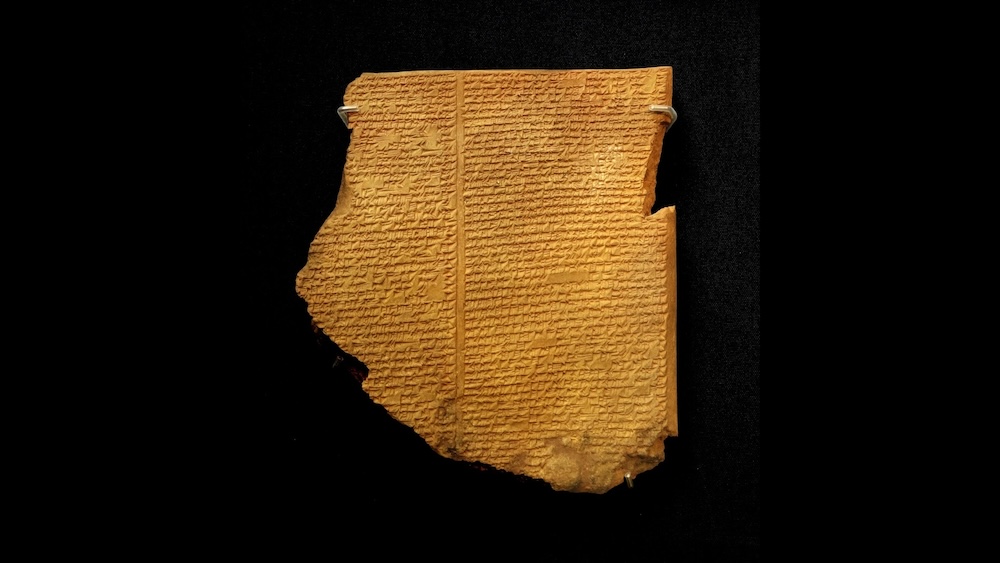Gilgamesh flood tablet: A 2,600-year-old text that's eerily similar to the story of Noah's Ark
The baked clay tablet tells the tale of an epic flood.

Name: Gilgamesh flood tablet
What it is: Also known as the 11th tablet of the Epic of Gilgamesh, this fragment of a baked clay tablet contains cuneiform inscriptions describing an epic flood that swept through Babylon. It is considered one of the oldest pieces of literature in the world.
Where it was found: Nineveh (also known as Kouyunjik), an ancient Assyrian city in Upper Mesopotamia (present-day Iraq).
When it was made: The Epic of Gilgamesh may date to as early as the third millennium B.C., but this particular tablet dates to the seventh century B.C.
What it tells us about the past: The epic tale that was carved into the ancient tablet is eerily similar to the biblical story of Noah's ark found in the Book of Genesis. The tablet describes how the gods sent a flood down to destroy Earth. However one god, Ea, alerts Utu-napishtim, the ruler of an ancient kingdom, of the plan and instructs him to build a boat to save himself and his family along with "birds and beasts of all kinds," according to the British Museum, which counts the artifact as part of its permanent collection.
Just like in the Book of Genesis, the voyagers release birds to see if the waters had receded enough for land to emerge. Later, Utu-napishtim tells Gilgamesh of his experience, according to the text.
Related: Shigir Idol: World's oldest wood sculpture has mysterious carved faces and once stood 17 feet tall
Sign up for the Live Science daily newsletter now
Get the world’s most fascinating discoveries delivered straight to your inbox.
Archaeologists discovered the roughly 6-by-5-inches (15 by 13 centimeters) tablet in the late 1800s but were unsure of what the inscription said. After handing over the artifact to the museum, a researcher named George Smith deciphered the text and allegedly said, "I am the first man to read that after more than two thousand years of oblivion," according to Smithsonian.
While this tablet was the first evidence of the Noah story coming from another culture, archaeologists have since discovered much older cuneiform tablets with similar flood stories that suggest the story had been circulating long before the Hebrew bible was written. In other words, the Epic of Gilgamesh may have been the source of the Noah's ark story.
You can read an English translation of the 11th tablet of the Epic of Gilgamesh online.
Jennifer Nalewicki is former Live Science staff writer and Salt Lake City-based journalist whose work has been featured in The New York Times, Smithsonian Magazine, Scientific American, Popular Mechanics and more. She covers several science topics from planet Earth to paleontology and archaeology to health and culture. Prior to freelancing, Jennifer held an Editor role at Time Inc. Jennifer has a bachelor's degree in Journalism from The University of Texas at Austin.










